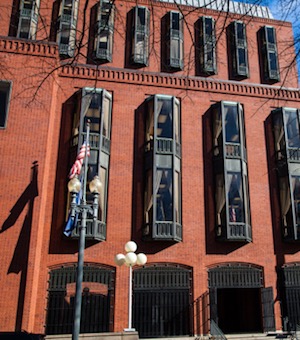 In re: Nuvasive, Inc., (Fed. Cir. Nov. 9, 2016) (Before Moore, Wallach, and Taranto, J.) (Opinion for the court, Taranto, J.)
In re: Nuvasive, Inc., (Fed. Cir. Nov. 9, 2016) (Before Moore, Wallach, and Taranto, J.) (Opinion for the court, Taranto, J.)
NuVasive owns a patent claiming a spinal fusion implant having a long-and-thin design. The sole independent claim recites a specific length and geometry, namely, “a longitudinal length greater than 40 mm . . . wherein said longitudinal length is at least two and half times greater than [a] maximum lateral width.” Medtronic petitioned the Board to institute two IPRs. In the first IPR, Medtronic cited U.S. Patent No. 5,860,973 to Michelson, among other references, as ground for invalidity, alleging that Figure 18 taught the claimed long-and-thin design. The Board instituted the IPR and ultimately invalidated all but one of the challenged claims. In the second IPR, Medtronic’s petition cited various other references but excluded Michelson, which Medtronic did not cite until its reply. NuVasive objected, asserting that the Michelson Patent operated as a new ground of invalidity, and filed a motion to strike, and alternatively, motions for surreplies. The Board denied NuVasive’s motions and entered a decision invalidating NuVasive’s claims. In both IPRs, the Board relied almost entirely on Michelson, including disclosure not argued by Medtronic.
NuVasive appealed, alleging that in both IPRs, NuVasive did not receive adequate notice of or an opportunity to address Michelson. The Court affirmed the Board’s decision in the first IPR. In the second IPR, the Board vacated the Board’s decision and remanded for further proceedings.
The Court explained that the Board can rely on other cited prior art, not asserted as grounds for invalidity, for limited or immaterial purposes, such as explaining asserted references or delineating the state of the art. However, the Board’s reliance on Michelson in both IPRs was material, and not merely background, because the Board relied almost exclusively on Michelson. Therefore, in both IPRs, NuVasive was entitled to notice and an adequate opportunity to respond.
In affirming the Board’s decision in the first IPR, the Court found no procedural violation, reasoning that Medtronic’s petition provided sufficient notice of Michelson’s teachings. For instance, the Court explained that, at the very least, a citation to the text discussing Figure 18 of Michelson was sufficient to give NuVasive an opportunity to address Michelson in its Patent Owner’s response. The Court rejected NuVasive’s additional challenges to the Board’s findings on invalidity.
However, in the second IPR, NuVasive never received an opportunity to respond to contentions citing the Michelson Patent. First, arguments in the first IPR did not carry over to the second IPR. Second, it was not until Medtronic’s reply that NuVasive received notice of Michelson, and then was denied an opportunity respond. NuVasive’s ability to enter observations regarding cross-examination of an expert who opined on Michelson was not an adequate opportunity to respond. The “observations are not a vehicle for submitting new evidence, including new expert declarations, by the patent owner,” and “indeed, the permitted content and format of observations are tightly circumscribed.”
The Court remanded to the Board for further proceedings to give NuVasive an opportunity to respond.
Patent owners must be given fair notice and an adequate opportunity to respond to contentions based on prior art that is ultimately material to the Board’s decision on invalidity.
[Troutman-Ad]
[Troutman-About]

![[IPWatchdog Logo]](https://ipwatchdog.com/wp-content/themes/IPWatchdog%20-%202023/assets/images/temp/logo-small@2x.png)


![[Advertisement]](https://ipwatchdog.com/wp-content/uploads/2024/04/UnitedLex-May-2-2024-sidebar-700x500-1.jpg)
![[Advertisement]](https://ipwatchdog.com/wp-content/uploads/2024/04/Artificial-Intelligence-2024-REPLAY-sidebar-700x500-corrected.jpg)
![[Advertisement]](https://ipwatchdog.com/wp-content/uploads/2024/04/Patent-Litigation-Masters-2024-sidebar-700x500-1.jpg)

![[Advertisement]](https://ipwatchdog.com/wp-content/uploads/2021/12/WEBINAR-336-x-280-px.png)
![[Advertisement]](https://ipwatchdog.com/wp-content/uploads/2021/12/2021-Patent-Practice-on-Demand-recorded-Feb-2021-336-x-280.jpg)
![[Advertisement]](https://ipwatchdog.com/wp-content/uploads/2021/12/Ad-4-The-Invent-Patent-System™.png)






Join the Discussion
No comments yet.